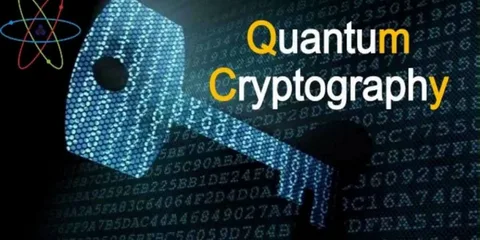Introduction
In an era where digital threats are becoming increasingly sophisticated, governments around the world are exploring cutting-edge technologies to secure sensitive information. Quantum Cryptography stands at the forefront of this endeavor, promising unparalleled security through the principles of quantum mechanics. This article delves into the potential and implications of Quantum Cryptography in government security, examining its capabilities, challenges, and the transformative impact it could have on securing classified communications.
The Quantum Advantage
1. Unbreakable Encryption
Traditional encryption relies on mathematical algorithms that, theoretically, could be broken with sufficient computational power. Quantum Cryptography, on the other hand, leverages the principles of quantum mechanics to create encryption keys that are theoretically unbreakable. The security of these keys is based on the fundamental quantum properties of particles, providing a level of protection that surpasses classical cryptographic methods.
2. Quantum Key Distribution (QKD)
At the heart of Quantum Cryptography is Quantum Key Distribution (QKD), a revolutionary method for secure key exchange. QKD uses quantum properties to detect any eavesdropping attempts, ensuring the confidentiality of the exchanged keys. This makes it theoretically impossible for an attacker to intercept or manipulate the key without detection, guaranteeing the integrity of the communication.
Quantum Cryptography Applications in Government Security
1. Secure Communication Channels
Government agencies regularly communicate sensitive information that demands the highest level of security. Quantum Cryptography provides a secure means of communication, ensuring that classified data remains confidential and protected from potential adversaries.
2. Protection Against Quantum Attacks
The advent of quantum computers poses a threat to classical cryptographic methods, as they have the potential to break widely used encryption algorithms. Quantum Cryptography, being quantum-resistant, offers a robust defense against the computational power of quantum computers, safeguarding government communications against future threats.
3. Quantum-Secured Networks
Government networks, which serve as the backbone for communication and information exchange, can benefit from the integration of Quantum Cryptography. By implementing quantum-secured networks, governments can establish a resilient and impenetrable infrastructure for the transmission of classified data.
Challenges and Considerations
1. Technological Complexity
The implementation of Quantum Cryptography requires highly specialized equipment and a deep understanding of quantum mechanics. Overcoming the technological complexity is a challenge that governments must address to deploy and maintain quantum-secured systems effectively.
2. Key Distribution Distance Limitations
While QKD provides secure key distribution, it is not without limitations. The distance over which quantum keys can be reliably distributed is currently constrained. Extending the reach of QKD for secure communication over long distances remains a focus of ongoing research and development.
3. Integration with Existing Infrastructure
Government agencies often rely on extensive and legacy communication infrastructure. Integrating Quantum Cryptography into existing systems poses challenges, and governments must carefully plan and execute the transition to quantum-secured solutions without disrupting essential operations.
Future Outlook
As Quantum Cryptography matures, its role in government security is expected to expand. Ongoing research aims to address the current limitations and enhance the practicality of implementing quantum-secured systems. The future could witness the widespread adoption of Quantum Cryptography as a cornerstone of government communication security, setting a new standard for protecting sensitive information. technology continues to advance, Quantum Cryptography is poised to become an indispensable tool in the arsenal of government cybersecurity strategies.
Conclusion
The future of Quantum Cryptography in government security holds the promise of ushering in an era of unparalleled protection for classified information. While challenges exist, the potential benefits far outweigh the obstacles. Governments investing in the development and deployment of Quantum Cryptography are not only securing their communication channels against current threats but also fortifying their defenses against the looming specter of quantum-enabled attacks. As this transformative technology continues to advance, Quantum Cryptography is poised to become an indispensable tool in the arsenal of government cybersecurity strategies.





